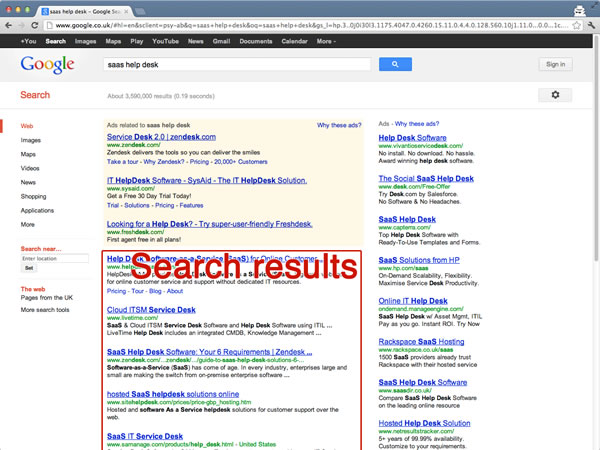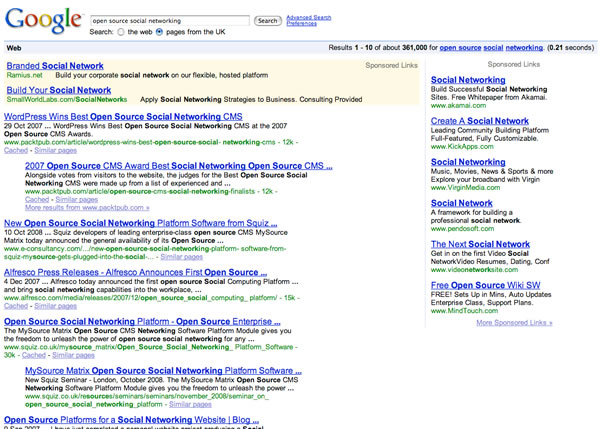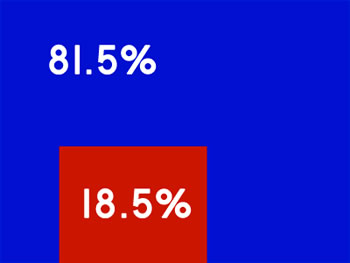A blog post questioning the priority Google places on displaying organic search results has sparked an interesting discussion between a Google employee and folks at Hacker News. On Monday, Alex Yumashev of Jitbit released an article suggesting that truly relevant results only occupy 18.5% of a Google search page – at least in his example search anyway, which was performed on a 13-inch (1280x960) notebook.
Of those pixels, only 535x425 displayed "something that people are actually looking for," while the rest were reserved for advertisements, tools and other Google services. Beyond surface area, Yumashev noted that his example search page contained about 45 different links and only five (11%) of them were actual search results. Excluding links to tools and Google services, search results still represented only 27% of the links.
By comparison, Yumashev cites an old screenshot of Google that is split 53% to 47% between results and ads. In other words, he says Google's search pages are becoming cluttered with junk the average user doesn't want to see. "The company is obviously interested in people clicking more ads (in fact, I believe that's also the true reason behind "Penguin" and "Panda") since it's the company's primary source of income..."
Modern Google Search Results

Old Google Search Results

Matt Cutts, head of Google's Webspam team, responded to the criticism by highlighting what he deems as flaws in Yumashev's analysis. Cutts noted that the left-hand column of Google's search pages shouldn't be excluded from the equation because they allow users to refine their results. He also notes that the actual search box is excluded as non-search, as is whitespace, which makes it "easier and faster" to scan results.
Cutts said ads shouldn't be dismissed as junk, either. "We actually think our ads can be as helpful as the search results in some cases. And no, that's not a new attitude," he explained. "Of course there are tons of searches where we don't show ads. A lot of people like to take a query that shows ads and say 'Aha!' but they're forgetting all the queries that don't show ads. Not to mention that our ads aren't just a straight auction"
Naturally, some folks aren't buying that. "Let's cut to the chase," wrote one user. "I sell a flowcharting tool. According to Google Analytics, ~40% of my visitors are running displays with a screen height of 800 pixels or below. Adjusting my browser window size accordingly, I search for 'flowchart software'. Only 2 organic results are above the fold, whereas there are 7 ads above the fold. 2/9 = 22%, so the OP really wasn't that far off..."
